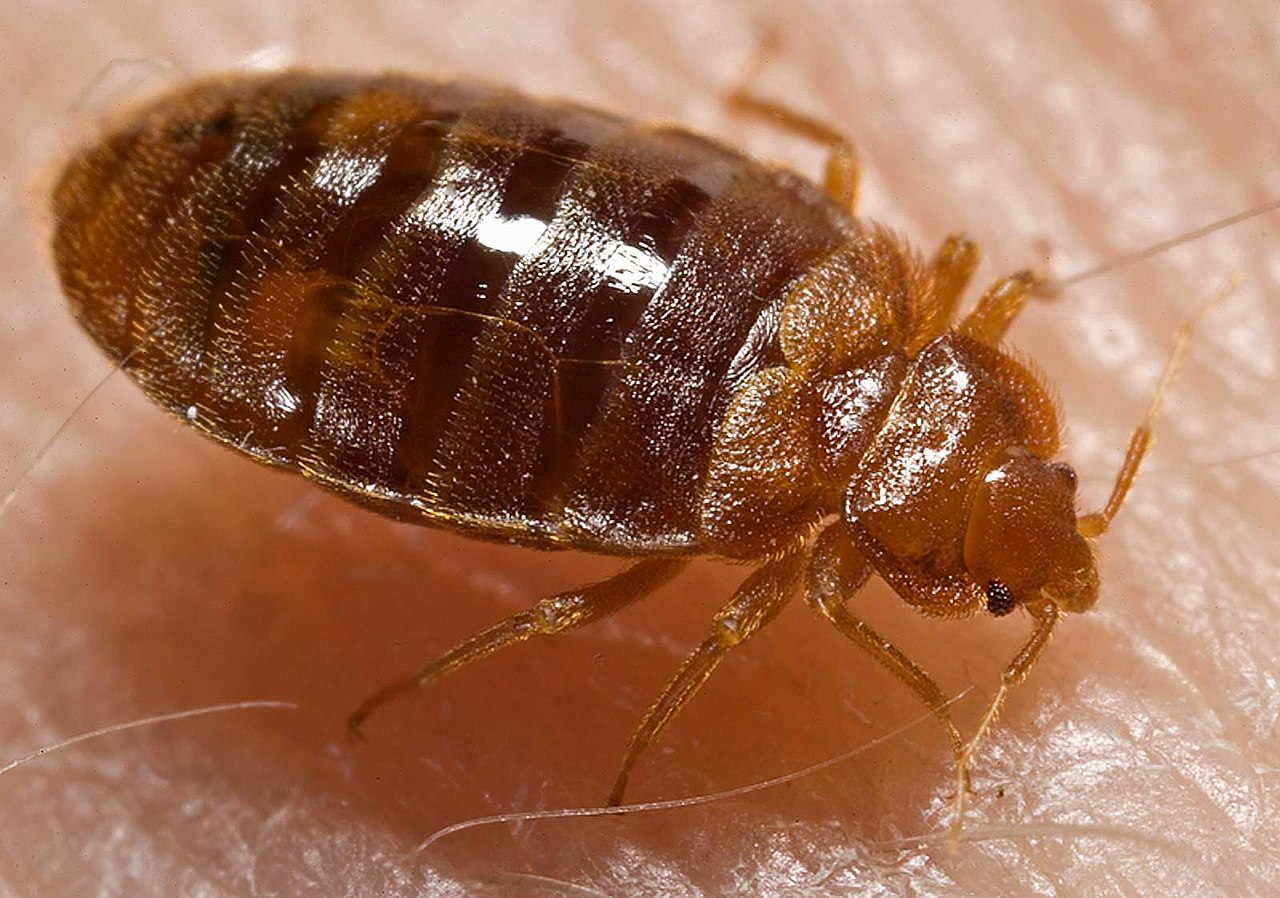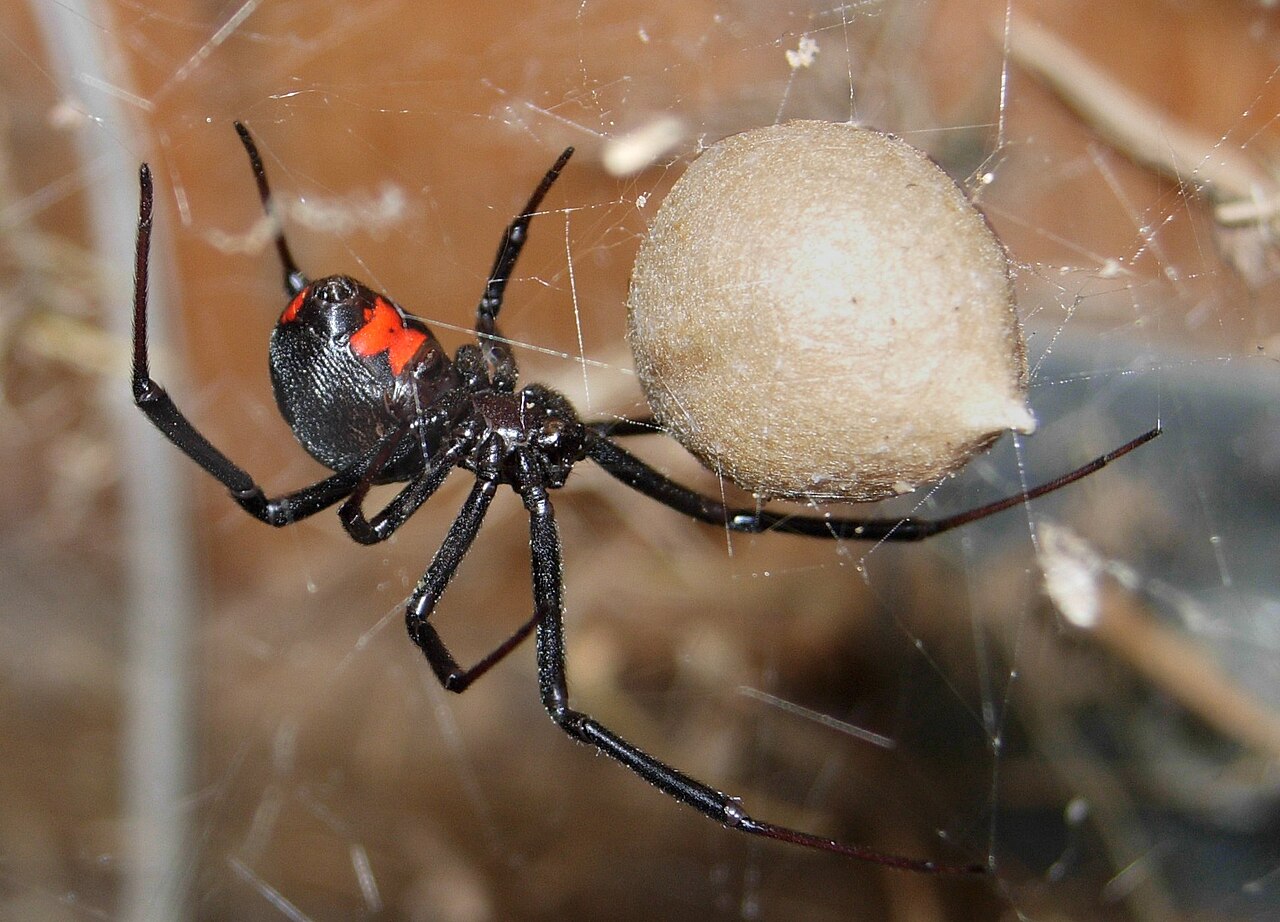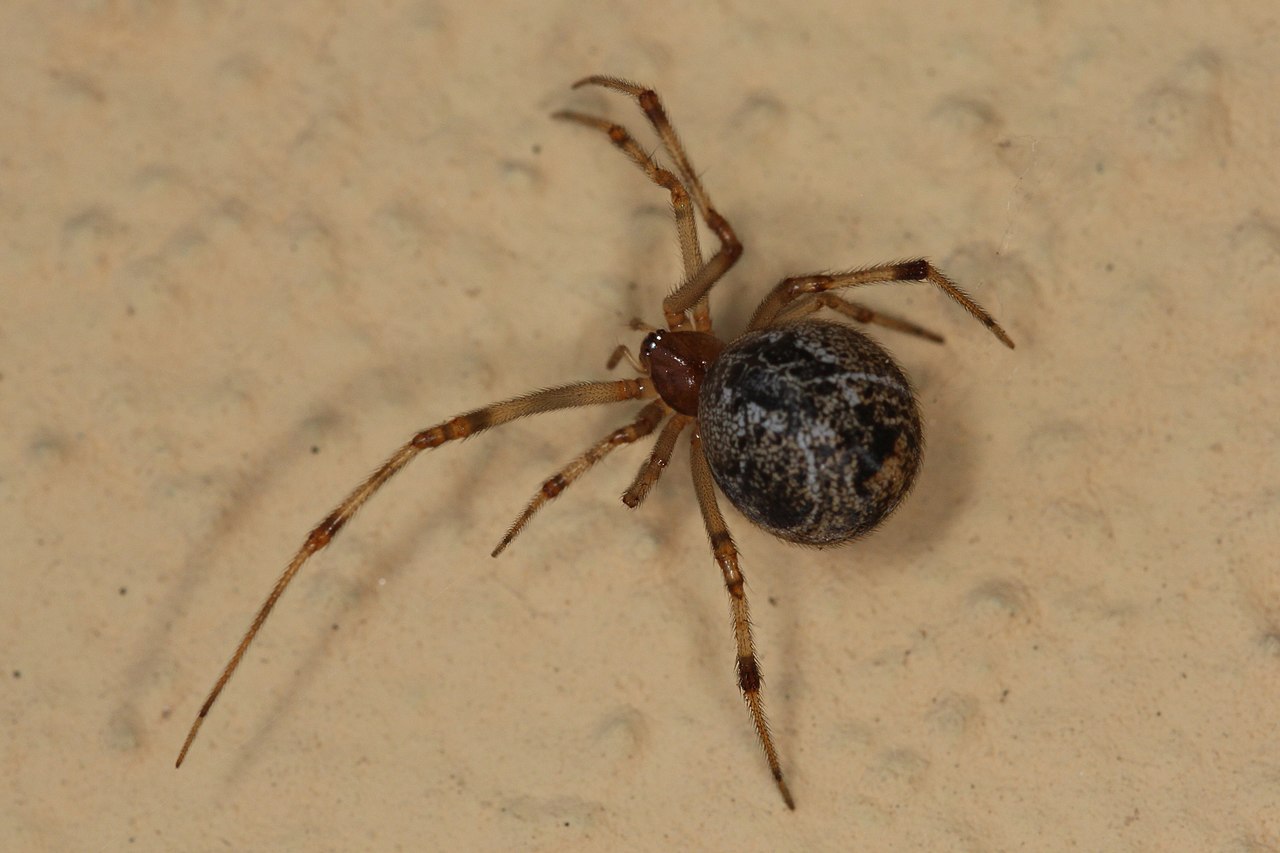Various types of bugs make their way indoors. Some of these are pests while others are occasional intruders that cause no damage to the home.
Tiny round bugs are constantly present in homes. Not all of these are pests but correct species identification allows you to take the right measures in dealing with them.
The good news is most tiny round bugs indoors are harmless. The bad news is some of the most damaging indoor bugs such as carpet beetles are tiny and round.
Here are some of the typical species of tiny bugs with a round shape you may find inside of the house, their diet, and the main reasons for being indoors.
Some of these can bite for a blood meal so it’s important to spot them before multiplying.
Table of Contents
1. Carpet Beetles
A common problem in homes is, Carpet Beetles are round and multicolored. They have white, yellow, brown, and black elytra and thorax.

Bugs of this species feed on plant pollen and nectar as adults. They enter homes on purpose or by accident, looking for food and shelter.
The young of this species are problematic inside the house based on their feeding habits. They eat different types of animal-derived products such as feathers, natural fibers, shed skin, and human hair.
Carpet Beetle larvae are also hairy. Their hairs are known to cause a long list of possible allergic reactions.

Skin-level reactions to touching the larvae include dermatitis.
Clear physical differences exist between the adult and The Carpet Beetle larvae. Adults are colorful and round while their larvae are elongated and dominated by brown colors with short brown hairs.
A female Carpet Beetle can lay up to 135 eggs at once. Emerged larvae spread around the house in a matter of 2 weeks.
2. Ticks

Ticks are some of the typical very small round bugs found in the house. These biting bugs have a red, brown, or red-brown color without any type of distinguishing patterns.
They feed on blood and may reproduce inside the house.
Ticks are notorious for their painful bites and for requiring action to be completely removed from the skin.
Dogs are often a target for ticks as they tend to move around bushes and dense vegetation, areas ticks thrive.
Once inside the house, ticks can still multiply if having access to a host such as a pet or the home’s residents.
Unlike other parasitic bugs, ticks may breed outside of the host. Females lay eggs at a close distance, but not on the host.
Surviving up to a few years in their ideal conditions, female ticks can lay anywhere between hundreds and thousands of eggs in their lifespan.
3. Bedbugs

Light brown to red-brown, Bedbugs are tiny round bugs often infesting homes.
Growing to a size between 4 and 5mm, these are also some of the smallest types of round bugs to be found in homes.
They can be spotted on walls, furniture, sofas, beds, armchairs, tables, floors, carpets, and even on clothes.
Feeding on blood, these biting bugs may not be easily seen as out in the open as they prefer to hide in crevices, corners, or under various objects.
Their activity can go from barely noticeable to highly noticeable and problematic within days because the female Bedbug lays eggs every day.
A female is capable of laying several eggs each day. This number varies between 1 and 10.
Even with 1 egg laid per day, a female can lay around 30 eggs in a month.
Not all of these eggs mature into actual bed bugs as they need to feed on blood at least once to become full adults.
Often considered the result of poor hygiene, bed bugs may be found even in the cleanest homes. They get inside by catching a ride on a host such as on humans visiting an infested home.
4. Flea Beetles

Various species of Flea Beetles can enter homes. Some have an elongated body shape, similar to other types of beetles.
Others are round and dome-shaped, similar to ladybugs. These types of round Flea Beetles can be black, brown, red, or multicolored.
Many types of Flea Beetles jump, which helps quick and correct species identification.
A considerable number of these tiny round bugs aren’t actually detrimental to home goods. Their impact is only visual.
These bugs may even be beneficial as they are known to feed on different types of invasive plants.
Flea Beetles are often deterred by certain plants. Deterred by radishes, they are less likely to be present in homes next to gardens with many radishes.
Many species feed on asters or bugleweed, only ending up in homes by accident or in small numbers.
5. Black Widow Spiders
Black Widow Spiders have a round body compared to many other spiders such as spiny species.
These types of venomous and dangerous spiders have a popular black and red appearance, with a red hourglass marking on a mostly black body.
Their round shape is further back by a round egg sac. Female Black Widows are known to lay bright (cream-white) round egg sacs.

A bright egg sac of the species may easily be confused with a bug or any other type of seed.
The round egg sac of the species measures up to 0.4 inches in diameter and hosts multiple young spiders.
These spiders end up eating themselves, with only a few reaching maturity. Egg sacs should be removed from the house before the young spiders emerge.
A female Black Widow Spider may live indoors for up to a year. Males have considerably shorter lifespans and may only live up to 3-4 months.
6. Cockroach Nymphs

Smaller versions of adult cockroaches, Cockroach Nymphs are a sign of trouble when spotted indoors.
Initially pellet-shaped and brown, these nymphs are a sign that a cockroach nest is found indoors.
Nymphs may be smaller and a bit differently-shaped than adults, but they prefer the same habitats and foods.
Unlike carpet beetles which can make their way even into the cleanest homes, roach nymphs thrive in warm and humid places with plenty of food.
Organic waste, open food, and even mold may all play their part when it comes to attracting cockroaches indoors.
Cockroach Nymphs are found in different places in the house. These are normally hidden places such as the gap under kitchen cabinets, under the bathtub, or behind furniture.
In the absence of such hidden places, these nymphs may be spotted in corners.
Dealing with them involves confirming the location of their nests which needs to be cleared.
Cockroaches may return indoors when there’s food for them or easy entryways such as gaps in walls.
7. Spider Beetles

Spider Beetles are named after their resemblance to a spider. These types of bugs are a common sight in many homes.
Unlike all spiders, Spider Beetles have a round body with a bulbous abdomen.
A brown color or a dark red-brown color represents a typical nuance for these beetles that resemble spiders.
Spider Beetles in homes may also be seen in rare colors. These include yellow and black. In some cases, they may appear in a striped brown and black color pattern.
Unlike actual spiders, they have very long antennae which may seem like extra front legs.
This species is small, often not growing to a size larger than 5mm.
The diet of spider beetles makes them stay indoors once they find a suitable home.
All types of foods are considered by these bugs. These foods include dry-stored foods such as nuts, oats, and cereals in cupboards.
Spider Beetles also eat different types of dead bugs and insects.
8. Ladybugs

Ladybugs aren’t fans of indoor living for food. Much of their diet is based on other bugs such as aphids, which are also rare indoors.
Spending much of their lives on crops or in gardens, ladybugs feed on different aphids and scale insects.
They move indoors or look to move indoors to overwinter.
Sheltered locations are ideal for these bugs.
From Pink Ladybeetles to Twice-Stabbed Ladybugs, these types of bugs move indoors when temperatures start to drop.
They may survive indoors in the form of a dormant colony. They reduce their activity levels to almost no activity at all during the winter before emerging back in the spring.
9. Stink Bugs

Stink Bugs have a shield-shaped body and may grow to the size of a fingernail.
They are a frequent sight in homes next to gardens, next to crops, or in farmhouses.
A typical plant-eating bug, Stink Bugs feed on tomatoes and beans, among other types of plants and legumes.
In gardens, they may feed on different types of fruits or even on flowers.
Their route indoors is favored by open doors and windows. Attracted to warm air currents or to light, these types of bugs can make it indoors.
Survival rates are reduced for these bugs that manage to make it indoors. Most die without access to their favorite foods.
Some types of stink bugs may manage to survive indoors, especially if there are many potted plants indoors.
Multiplication is rare and not as successful indoors as outdoors. Stink bugs may still lay up to a few hundred tiny white eggs during their lifespan.
10. Booklice

Booklice come in different shapes and colors. Some may have wings while others are wingless. Often too small to see without magnification, these types of bugs thrive indoors.
Many items around the house serve as the perfect food for these bugs. These common items include wallpaper and bookbinding.
Booklice also feed on fungi and on stored dry foods such as grains.
High humidity and mold formation are among the first elements that attract booklice indoors.
Some homes are prone to indoor humidity. Homes in areas with long winter days or in areas with plenty of rain are known to have high indoor humidity.
Old homes or homes with poor ventilation also suffer from mold and mildew. These organic materials that build up as a result of high mold attract booklice.
Even more, they can attract different types of booklice, from the flying ones to the crawling ones.
11. Bat Bugs
Bat Bugs are found in homes with bats. These bats may not be immediately noticeable as they like dark remote areas of the house.
Most likely, bats live in attics or in old chimneys. This is the main source of Bat Bugs. These are parasitic bugs that feed on the blood of bats.
They diet when they don’t have a bat bug but they can simply spread around the house in the case of numerous indoor bats.
Most commonly, Bat Bugs are confused with other round apple-seed-like bugs such as bed bugs.
Both have a red-brown nuance, a similar shape, and a similar size. These types of bugs are found in old homes or homes in areas with bat activity such as those built next to large caves.
Bat bugs move out of the house when the bats are eliminated from their indoor sites as well.
12. American House Spider

American House Spiders are a typical spider species in homes. These spiders are known to reproduce at a rapid rate.
Young emerged American House Spiders are particularly small and round-looking.
Adults have a round bulbous body but a segmented thorax and abdomen appearance clearly visible as opposed to the more rounded appearance of their spiderlings.
Handling these spiders isn’t recommended as they can bite. The pain associated with the bite can last up to 1-2 days.
These spiderlings are born from drop-shaped sacs laid by females.
The female is also typically close to these sacs in the initial stages.
Unlike other spiders, The American House Spider is a species that can pretend to be dead. Playing dead is one of the ways in which the species manages to avoid predators.
13. Clover Mites – Red Round Bugs

Clover Mites are among the most common very tiny round bug indoors. These types of bugs move indoors with sudden weather changes.
Heavy rain, long drought periods, or a sudden temperature drop are all factors that influence the presence of these bugs indoors.
While brown and round, their tiny bodies may appear simply as small black dots moving around.
They live in lawns, particularly on heavily-fertilized lawns.
Once they move indoors, they may seek out dark moist places of the house as they like moisture.
Female Clover Mites lay up to 90 eggs, but rarely multiply indoors.
These types of bugs aren’t true pests. They don’t eat anything they can find indoors and rarely survive more than a few days if they can’t find a moist place to hide in.
A small side effect they come with is their ability to stain floors whenever crushed.
14. Aphids

Aphids come in rounded bodies in different colors. They are seen in black, green, yellow, red, pink, and other nuances.
Feeding on plants, fruit, and a long list of crops, aphids make it indoors via plants or are attracted to light.
They may not survive indoors due to the lack of abundant food or the very specific food aphids feed on.
Various species such as Melon Aphids and their young are specifically known for having a round tiny shape.
As their name implies, they feed on melons and related crops. They may get indoors from gardens with melons or through the leaves of watermelons, cucumbers, and related fruits such as pumpkins.
A common soft-bodied insect, aphids are a type of serious crop pest.
They aren’t known as indoor pests and they don’t cause any physical damage once indoors.
Most of them die within days as they cannot find any plant juices to feed on if they accidentally make it indoors.
In rare cases, aphids may survive long winters indoors if their homes with plenty of house plants. Their eggs may become dormant indoors over the winter as well.
Most aphids, on the other hand, only feed on 1-2 plants and may not survive indoors due to a lack of food choices.
15. Ebony Bugs

Pastures are among the most common distribution areas for Ebony Bugs. But any home surrounded by gardens and tall vegetation in the US may be a temporary home for this small bug running from cold weather.
Ebony Bugs are tiny, round, and dark brown or black. They feed on flowers and various young soft seeds.
These tiny bugs may seek out shelter after heavy rain. A warm place to hide in is also a top reason for them to move indoors.
While they can drink plant sap, they cannot bite as their elongated mouthparts cannot pierce human skin.
Only seen indoors in small groups, these bugs don’t reproduce in the house as they have no suitable place to lay their eggs.
Homes with large gardens with plenty of carrots and parsley are the most likely to be the temporary house of this species.
Ebody Bugs are a species associated with different types of wildflowers as well. Those growing Queen Anne’s Lace Around the house may also be unwillingly inviting the species indoors.